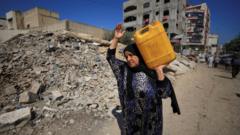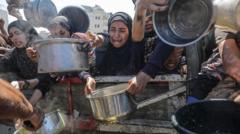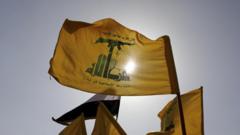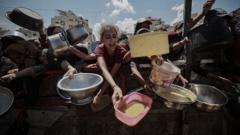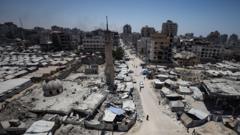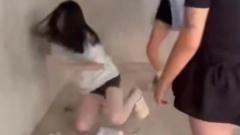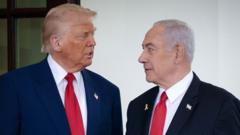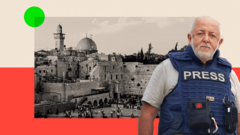Tensions escalate as Israel's military strikes on Iran prompt varying responses from the youth opposing their government, revealing a struggle between seeking freedom and navigating fears of foreign intervention.
Conflicting Views: Young Iranians Torn Between Freedom and Foreign Intervention

Conflicting Views: Young Iranians Torn Between Freedom and Foreign Intervention
As Israel's airstrikes target Iran, divided opinions emerge among young Iranians opposing their regime.
Last Friday, Israel initiated extensive air assaults on Iran, triggering a retaliatory missile response from Tehran. In a video released the same day, Prime Minister Benjamin Netanyahu addressed the Iranian populace, asserting that Israel aims not only to dismantle Iran's nuclear ambitions but also to facilitate their journey toward liberation. While some factions within Iran’s disunited opposition have endorsed Netanyahu's appeal, others express skepticism regarding his motivations.
Following decades of governmental suppression, official opposition entities are virtually absent within Iran, where dissidents face severe reprisals, including a history marked by mass executions and imprisonments in the 1980s. Consequently, many opposition movements now operate from outside the country, including the organized factions supporting Reza Pahlavi, the son of Iran's last Shah, and the exiled Mojahedin-e Khalq Organisation (MEK/MKO).
The Iranian government's strict regulations have made it increasingly challenging for journalists to connect with local citizens, leading to restricted internet access and social media usage. Nevertheless, recent discussions with several young Iranians who oppose the prevailing regime—whose names have been altered for anonymity due to safety concerns—have shed light on their sentiments.
One young woman, Tara, 26, told us that as Israel issues evacuation alerts prior to its strikes, the Iranian authorities often shut down internet services, which contributes to rising death tolls due to misinformation. She criticizes the government for creating chaos through checkpoints, arguing, “The enemy has been killing us slowly for decades. The enemy is the Islamic Republic!”
Israeli forces have disseminated evacuation notices through Telegram and X, which remain inaccessible in Iran. Another young woman, Sima, 27, expressed her fatigue with the state of affairs, saying, “I wish Israel would get the job done as soon as possible... but I want them to rid us and the world of the threat of the IRGC and the ayatollahs.”
Supreme Leader Ayatollah Ali Khamenei maintains control as commander-in-chief of Iran's armed forces, overseeing the Islamic Revolutionary Guard Corps (IRGC). Following recent Israeli attacks that resulted in the deaths of numerous senior IRGC officials, a younger protestor, Amir, 23, conveyed strong support for the airstrikes, claiming, “We tried, remember? And they killed us in the streets.”
In the wake of the unrest brought on by the death of Mahsa Amini in police custody, which unleashed protests resulting in over 500 fatalities, many youths have rallied behind the sentiment of “woman, life, freedom,” echoed by Netanyahu in his address to Iranians.
However, not everyone is swayed by Netanyahu's proposition. One activist, Navid, 25, conveyed his fears that the conflict could lead to widespread devastation in Iran. Others voiced anxieties that dependence on foreign intervention could yield more harm than good. Darya, 26, remarked, “Netanyahu is hiding behind Iranian nationalist slogans… It’s going to take years just to rebuild the country.”
Arezou, 22, captured the sentiment of many, saying, “I feel like I have to choose between two evils." Meanwhile, Mina, 27, expressed, “I want this regime gone more than anything—but not like this. I don't want to trade one kind of terror for another.”
The division among young Iranians highlights a complex issue, caught between aspirations for change and the harsh realities of potential foreign conflict.

